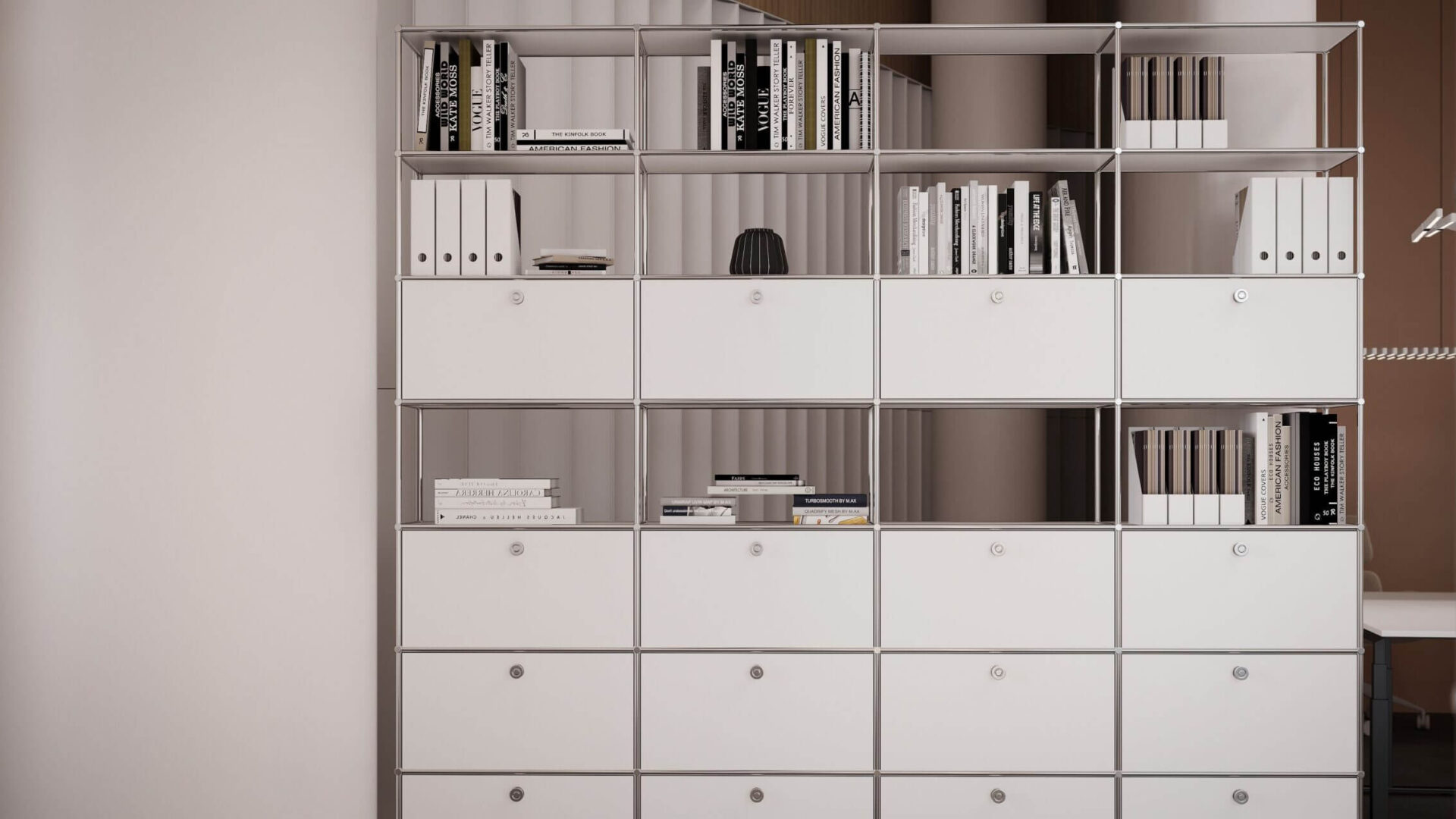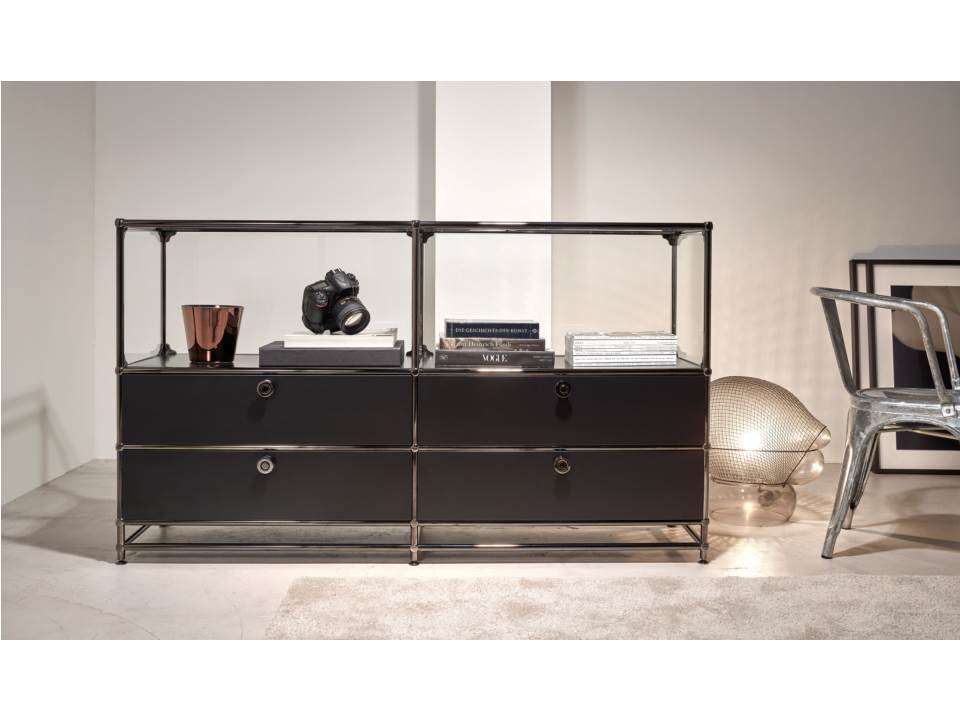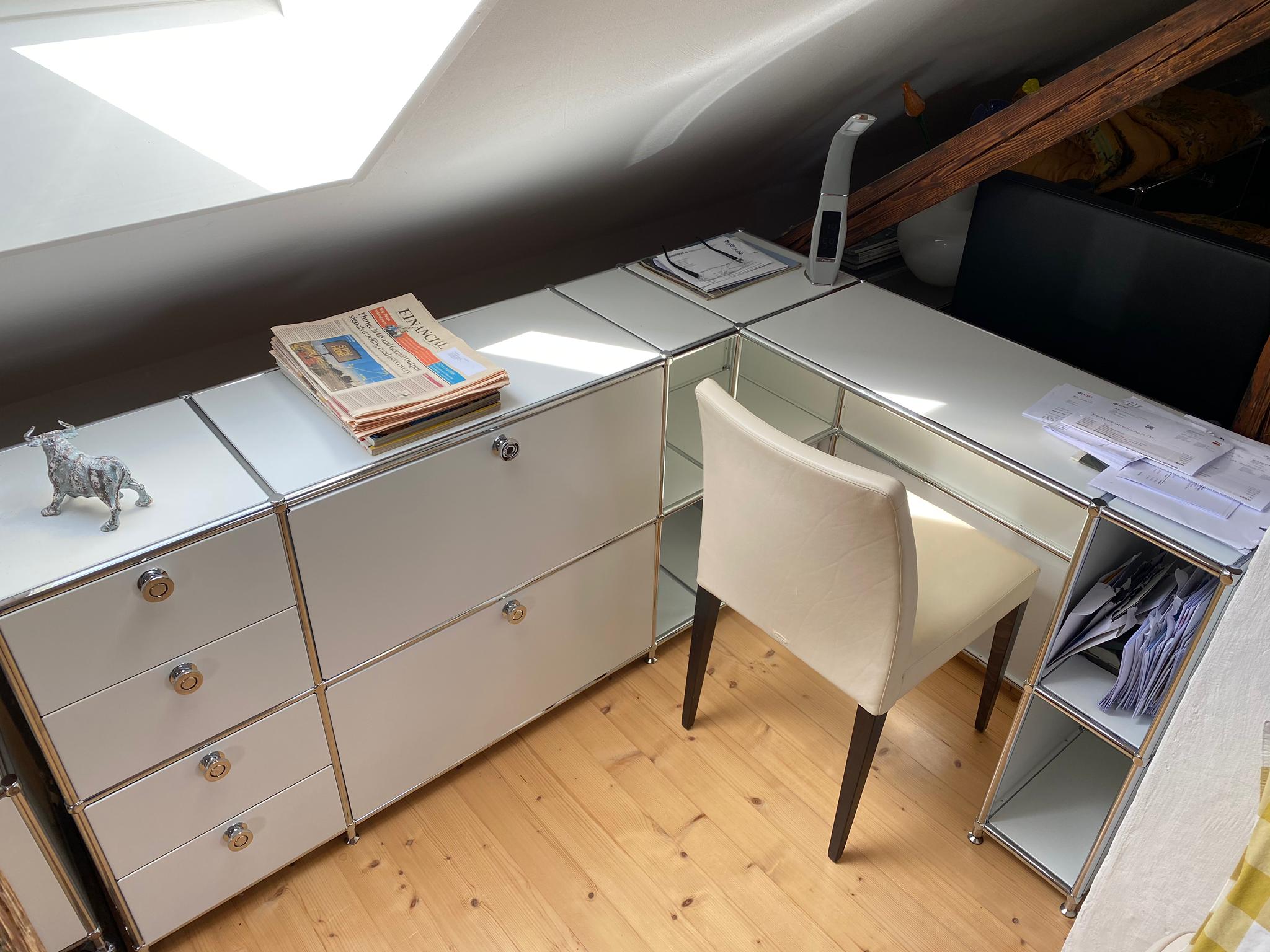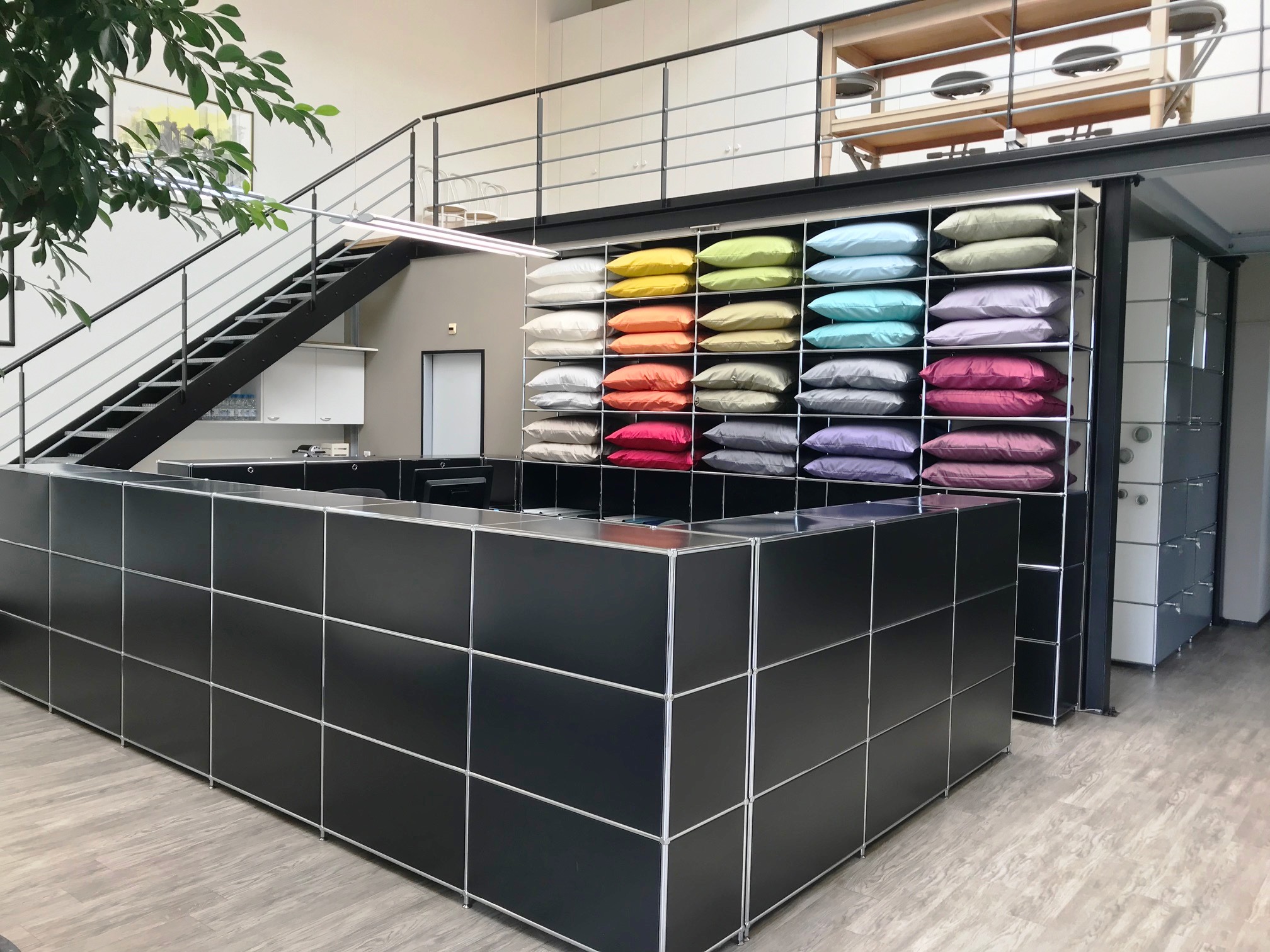Inhaltsverzeichnis
ToggleWhat is the difference between a chest of drawers and a sideboard, lowboard and highboard?
Whether it’s a classic chest of drawers, sideboard, highboard, or lowboard – they can be found in every home and we wouldn’t want to be without them. They’re not only practical, they also look great, create storage space, and often accompany us throughout our lives. But what is the difference between them? The various names can be confusing, as some pieces of furniture cannot be clearly classified. There is an ever-increasing variety of them, breaking down rigid definitions. All of these pieces of furniture belong to the so-called box furniture category and are used to store a wide variety of items. Due to the introduction of anglicisms, we now like to speak of lowboards, sideboards, and highboards. These terms correctly indicate different heights. But are there also functional differences? And how can the traditional German terms be assigned? We shed some light on the matter.
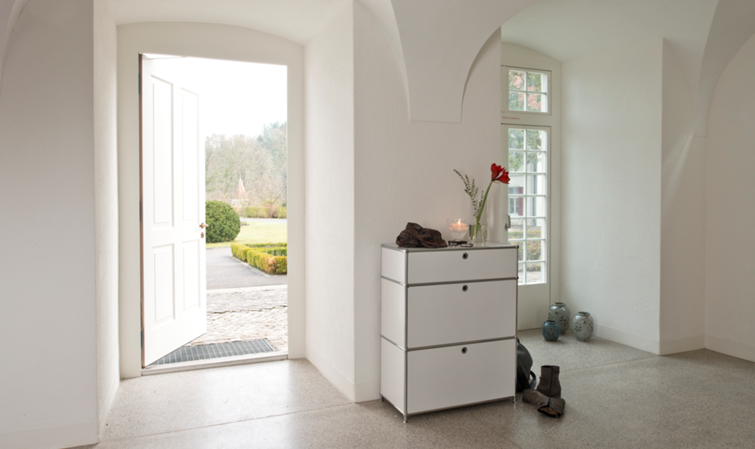
How important are the differences anyway?
If you’re looking for a traditional, fully configured piece of furniture, it’s important to know what the various terms mean, as this will make it easier for you to find the right piece. But beware, there are many hybrid models available today—the naming conventions can only be a guideline. Modern modular furniture systems allow you to customize the dimensions and functions of your furniture entirely to your needs—purely according to your wishes—unrestricted by standard definitions.
The chest of drawers
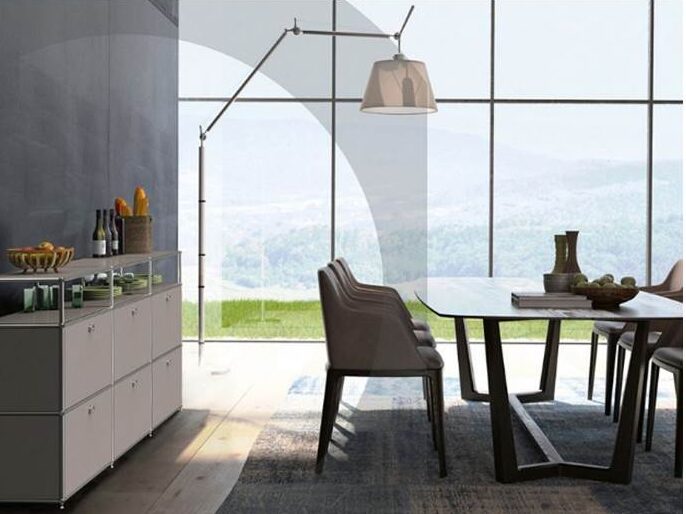
A dresser always consists of drawers, although these can vary in number and size. Because dressers are so popular, they are now available in a wide variety of heights and widths, allowing them to adapt to all storage needs and fit into any room: bedroom, living room, dining room, children’s room, or entryway. Incidentally, the dresser began its triumphant advance in bedrooms, where women stored their clothes and linens.
Chest of drawers definition
A chest of drawers is a piece of furniture equipped with drawers. Its origins can be traced back to the Middle Ages . The German word was borrowed from French around the mid-18th century, where it originated around 1700 as a noun from the adjective “commode” (meaning “comfortable”).
As early as the 18th century, chests of drawers were often combined with other types of furniture. The tops included shelves , display cabinets , and cupboards, the latter often with a central door flanked by numerous drawers. Secretaries, sideboards, and display cabinets evolved from these.
The sideboard
A sideboard is generally 70-100 cm high, making it very similar to a classic chest of drawers. However, it differs in its function. Instead of drawers, the sideboard is often equipped only with doors and shelves. As a sideboard in the dining room, it also has drawers for cutlery. Today, sideboards are also placed in living rooms or other areas, as their storage and decorative functions can be perfectly combined. Sideboards are often combined in living rooms to create decorative elements of impressive length.
Sideboard definition
In German, a dining room sideboard is often called a “buffet” or “sideboard.” However, there is a significant historical difference in the origins of these two pieces of furniture. The buffet evolved from the chest, while the sideboard evolved from the table.
A sideboard was traditionally used in the dining room for serving food, storing, and displaying serving dishes. They became popular in the 19th century, when households became wealthy enough to establish a separate dining room.
The highboard
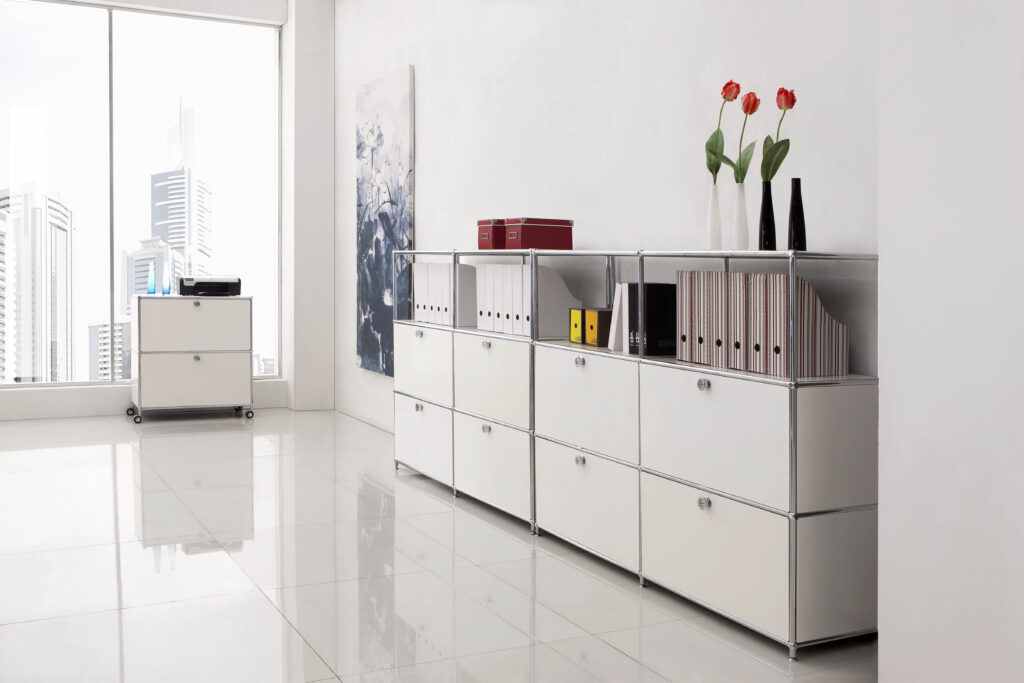
A highboard is generally 110-130 cm high, making it taller than a dresser or sideboard, but shorter than a wardrobe or wall unit. It is also usually taller than it is wide. It combines a variety of storage options: doors and shelves, drawers, display cabinet doors, and open shelves. They thus offer a wide range of storage options.
Highboard definition
The highboard also evolved from the sideboard, a taller buffet. Unlike the sideboard, however, it often features open shelving and display units for
displaying favorite items. A buffet was traditionally used in the dining room or kitchen for storing and displaying serving dishes. The term “highboard” doesn’t exist in English. It’s a modern, very general term for a tall, box-like piece of furniture with a wide variety of storage options. Highboards are now found in many rooms as storage space and eye-catchers.
The lowboard
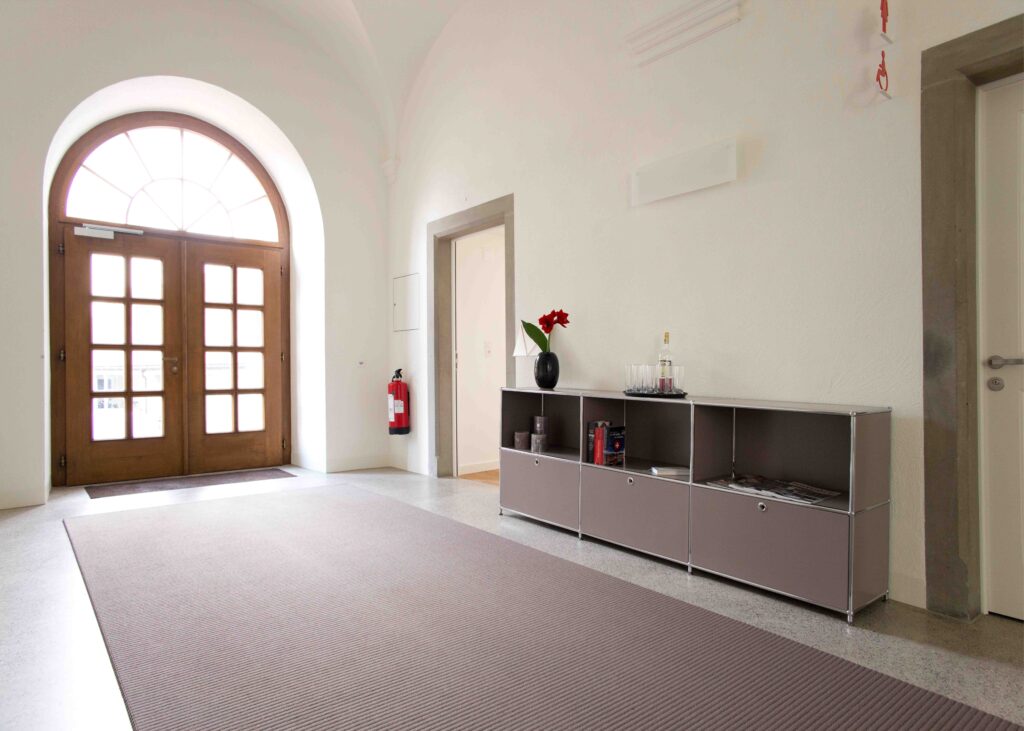
As the name suggests, a lowboard is always low. It’s typically between 25 and 50 cm high and is now primarily used as a TV or media unit. The screen can be placed on the lowboard or on the wall above it. There are many width options to suit large and small TVs.
Lowboard definition
The lowboard evolved from the classic TV cabinet. As TV sets evolved, the furniture also evolved and is often used as media furniture. All technical devices such as receivers, DVD players, etc., find their place within the cabinet. For orderly cable management, either no back panels are used or back panels with cable cutouts are used. But even without a TV, the lowboard is a popular piece of modern furniture that utilizes the width of the room rather than its height and, with the appropriate length, can visually stretch rooms.
The shelf
A shelf is a simple, open storage solution. There are basically two types: the wall shelf, which consists of a single shelf attached to the wall, and more complex, freestanding shelves. Shelves are always open at the front, but can
also have side and back panels. Modular furniture systems offer the optimal option of partially equipping a shelf with closed compartments or drawers, thus maintaining the lightness and transparency of a shelf while simultaneously creating storage space for less representative items.
Shelf definition
The term “shelf” comes from the Latin word “riga,” meaning “row.” It is a piece of furniture used for storing all kinds of items. It consists of horizontal shelves connected to a vertical frame or attached to the wall. Unlike a cabinet, it is open at the front.
Wie hat Ihnen der Artikel gefallen?
Auf die Sterne klicken, um zu bewerten.
Durchschnittliche Bewertung 5 / 5. Anzahl der Bewertungen: 29
Noch keine Bewertungen. Geben Sie die erste Bewertung ab.


